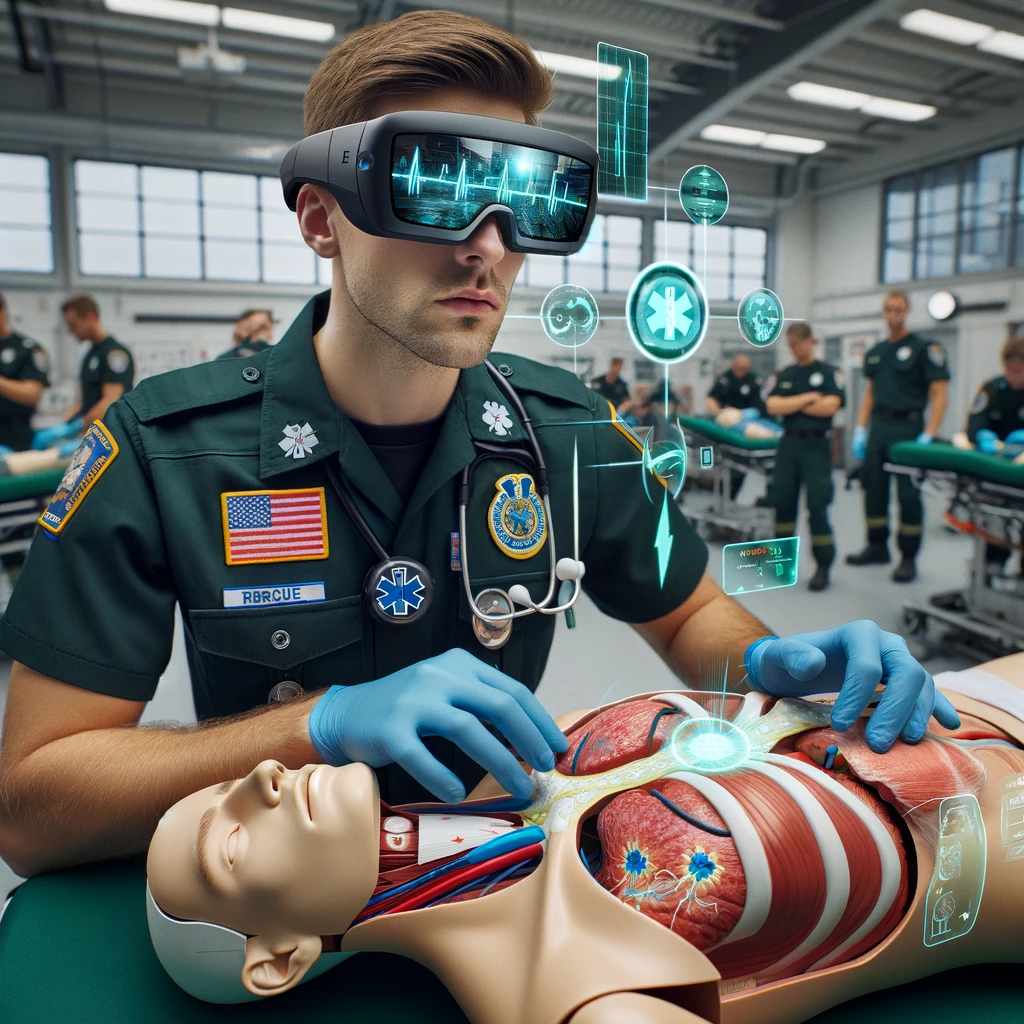
Revolutionizing Paramedic Training: Augmented Reality's Life-Saving Impact
Empowering EMS Professionals with Realistic AR Simulations and Remote Learning
Training emergency medical services (EMS) professionals and paramedics is a cornerstone of effective emergency response and patient care. The ability to prepare these first responders for high-pressure, unpredictable situations is crucial, as their knowledge and readiness can mean the difference between life and death for patients in critical condition. Traditionally, recreating realistic scenarios for training has been challenging and resource-intensive. But now, augmented reality (AR) is stepping in to revolutionize paramedic training, offering a safer, more efficient, and highly effective approach.
The AR Advantage
Augmented reality, or AR, is changing the game for EMS professionals. AR overlays images, videos, and 3D models onto the real world in real time, creating a unique training experience that no other technology can match. With wearable devices like AR glasses, paramedics can access a range of benefits:
- Improved Situational Awareness: AR enhances situational awareness, providing a broader perspective and real-time data to paramedics. This, in turn, leads to better decision-making and patient care during emergencies.
- Enhanced Skill Acquisition: Through AR, paramedics can practice and refine their skills without real-world risks. They can repeatedly perform procedures and make critical decisions, honing their abilities and increasing their confidence.
- Realistic Training Simulations: AR can simulate lifelike and potentially hazardous scenarios without compromising the safety of paramedics. This allows trainees to prepare for real-life emergencies while operating in a controlled and secure environment.
Anatomy and Symptom Visualization
AR technology built into these glasses allows paramedics to visualize anatomical structures in real time. This means that they can assess a patient’s body and symptoms while making crucial, in-the-moment decisions. By projecting diagrams onto a patient’s body during training, paramedics can better understand how various symptoms appear, such as those associated with a stroke.
Real-Time Vital Signs
AR devices also display a patient’s vital signs in real time, directly in the paramedic’s field of view. This enables paramedics to monitor and interpret critical indicators like heart rates. By practicing with this vital information alongside other symptoms, trainees can develop the skills to recognize signs of a deteriorating heart rate in a real-life medical emergency safely and effectively.
Extending Beyond Paramedic Training
The benefits of AR visualization extend beyond paramedic training. In healthcare settings, including doctor’s offices and training hospitals, residents and medical students can use AR glasses to access course modules, anatomical diagrams, and diagnostic examples, enhancing their learning experience.
Remote Training for EMS Providers
In light of the challenges posed by disease transmission, such as during the COVID-19 pandemic, remote training is becoming increasingly vital. With AR technology, paramedics can now train from anywhere, with minimal location preparation. This remote approach not only protects the health of trainees but also offers budget-related advantages by reducing the need for costly transportation and on-location training.
Augmented reality is revolutionizing paramedic training by offering a safer, more realistic, and highly efficient means of preparing EMS professionals for the challenges they face daily. By combining cutting-edge technology with the invaluable skills of first responders, we can ensure that our heroes are better equipped than ever to save lives and provide crucial care during emergencies.


